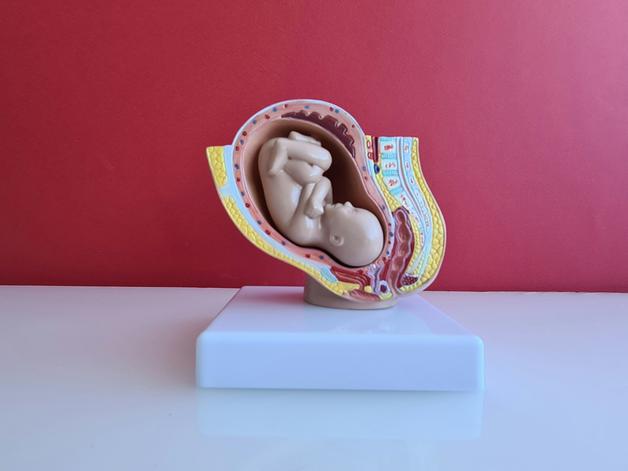Welcoming a new life begins long before the first cries—pregnancy is a tapestry woven of anticipation, doubt, joy, fear, and transformation. For many parents, the ground shifts overnight: ordinary routines become studded with questions (How much weight gain really is “normal”? Will those sharp back pains ever relent? Can mood swings be explained—or controlled?). The mind buzzes, the body stretches and stirs, and every flutter seems both miraculous and bewildering. Let’s unravel, together, the multifaceted journey of pregnancy: its physiological marvels, medical touchstones, dietary debates, soothing advice for daily discomforts, and emotional undercurrents—empowering parents with evidence, empathy, and reassurance.
Understanding Pregnancy: The Beginning of a Profound Transformation
Conception: The Quiet Miracle
Every pregnancy begins with a microscopic drama. Ovulation releases an egg—tiny, but half the story. When a sperm finds and fuses with this egg, conception occurs. Now, the single-cell zygote speeds toward the uterus, multiplying into a blastocyst before anchoring deep in the uterine wall. This event triggers the production of human chorionic gonadotropin (hCG)—the very hormone that home pregnancy tests detect, catapulting many into joy, shock, or cautious optimism.
Pregnancy Timeline: From Implantation to Birth
The classic forty-week gestational period encompasses three trimesters, each with its distinct rhythms and revelations. But weeks pass irregularly: some drag in a haze of fatigue and nausea; others sprint, marked by baby’s first kicks or an anatomy scan that shows tiny fingers and toes. Behind the scenes, complex hormonal cascades remodel nearly every organ system (heart, kidneys, skin, brain), preparing the parent’s body to nourish and protect new life.
Physical Changes: The Architecture of Adaptation
You may notice breast tenderness, nausea in the morning (or, surprisingly, late at night!), frequent urination, skin undergoing bizarre changes—pigmentation, hair thickening, stretch marks etching their stories—and a shifting center of gravity. Why? The uterus, once the size of a pear, stretches enormously. Blood volume increases by up to 50%. Ligaments loosen due to relaxin. These shifts, though sometimes jarring, provide the baby’s safest haven.
Weight gain during pregnancy puzzles and sometimes frustrates. The numbers on the scale rise differently for everyone. Medical experts recommend ranges, but the real focus should fall on balanced, nutrient-rich food. It’s never about “eating for two.” Instead, supporting a growing fetus relies on targeted nourishment: folic acid, iron, calcium, and Omega-3 fatty acids, all essential for organ development and skeletal strength.
Fatigue during pregnancy demands respect—not ‘pushing through’. Your body sustains a high metabolic demand, even at rest. Small naps, slow mornings, and gentle movement allow you to harmonize with the unique tempo of pregnancy.
Easing the Discomforts
Leg cramps, heartburn, and ligament pain may intrude in the second and third trimesters. Is your sleep newly fragmented? The advice is practical, not magical: experiment with different pillow arrangements, avoid rich or acidic foods at night, and elevate your legs. Remedies such as ginger for nausea or prenatal yoga for flexibility can offer real relief. Every discomfort, though, deserves compassionate attention; never hesitate to discuss persistent symptoms with your medical team.
Emotional and Psychological Changes: The Mind’s Quiet Work
Pregnancy often uncovers layers of emotion parents never expected to confront. From elation to sudden tears, from creative bursts to moments of deep uncertainty. Hormonal shifts explain some, but personal histories, anxieties about labor, body image, or changing family dynamics play their part. Sometimes, a heightened sensitivity emerges—a state researchers call “psychic transparency.” Reflecting, revisiting childhood memories, or re-evaluating relationships is common.
Support networks—whether friends, family, mental health professionals, or peer groups—help convert isolation into collective strength. Discussing emotional fluctuations or fears with a psychologist or joining community parenting circles does not signal weakness; it demonstrates adaptive resilience and care for your mental health.
Confirming a Pregnancy: Modern Tools and First Steps
Most parents first confirm pregnancy with a home urine test. These tests search for rising levels of hCG, but only a professional blood test yields maximum accuracy (sometimes even before a missed period). An early ultrasound, typically after the fifth week, confirms the presence of a gestational sac—the first sign of the embryo and, soon after, a visible heartbeat.
Early prenatal appointments matter enormously. These visits assess overall health, physical and psychological wellness, and initiate screening for genetic conditions or infectious diseases. Healthcare professionals may recommend folic acid supplementation to mitigate neural tube defects, or iron for mothers with borderline anemia.
Who provides care? Choices abound: general practitioners, obstetricians, and midwives all offer specialized follow-up based on individual needs and health history. Trust, comfort, and clear communication are paramount.
The Trimesters in Detail: Following the Arc of Change
First Trimester (Weeks 1–12): Laying the Blueprint
The landscape of early pregnancy is marked by bewildering symptoms—sudden nausea, aversions (the smell of coffee, once appealing, now intolerable), and overwhelming drowsiness. Organs take shape, most miscarriages (spontaneous pregnancy losses) tragically occur here, and hormone-driven changes accelerate. Spotting or slight cramping may occur as the embryo implants; however, heavy bleeding or sharp pain justifies immediate medical assessment.
Tips: Eat bland foods (crackers, bananas), stay hydrated, avoid drastic schedule changes, and honor the signals your body sends—even if ordinary stamina seems elusive.
Second Trimester (Weeks 13–27): A Period of Growth and Stability
For many, this window brings relief: appetite steadies, energy returns, and the joys of feeling baby’s first movement—“quickening”—spark delight. The anatomy ultrasound meticulously surveys organs and sometimes reveals the baby’s sex. The uterus now pushes the abdomen forward—a visual signal the journey is progressing.
Routine exams: Screening for gestational diabetes by glucose challenge, assessment of uterine growth, and, if needed, non-invasive genetic testing enrich the dialogue with your provider.
Third Trimester (Weeks 28–40): Approaching the Threshold
The end is in sight, but new discomforts often surface: swelling (especially ankles), shortness of breath, nightly wakefulness as the baby shifts. The fetus gains weight rapidly; the lungs and brain mature apace. Now, prenatal visits become more frequent: monitoring for pre-eclampsia (a serious blood pressure complication), discussing labor preparations, and ensuring the baby’s position (often “head down”) is optimal for a vaginal birth.
Labor signs include regular and intensifying contractions, “water breaking,” passage of the mucus plug (“bloody show”), or a discernible drop in fetal movement. Never second-guess these symptoms; reaching out to your medical team ensures safety for both parent and baby.
Conscious Nutrition: Debunking Food Myths, Supporting Health
Nutrition in pregnancy evolves—quality surpasses quantity. Popular images of “eating for two” mislead. The scientific consensus is clear: a moderate caloric increase, with emphasis on variety, yields best results. The priorities? Plenty of leafy greens, well-cooked protein, dairy (as tolerated), and fortified grains. Iron fights anemia. Calcium builds baby’s bones. Omega-3 supports brain and visual development.
Avoid: raw or undercooked meat (to limit toxoplasmosis and listeriosis risks), high-mercury fish (such as swordfish), and unpasteurized cheeses. Rinse all produce meticulously. Folic acid, often in prenatal vitamins, shields neural development—especially early on.
Gentle Activity: Movement as Medicine
Does movement benefit pregnancy? Absolutely. Even in the absence of formal exercise, gentle walks, prenatal yoga, or swimming ease musculoskeletal aches, boost mood through endorphin release, and may support better sleep. Movement enhances circulation, mitigates swelling (edema), and helps maintain a healthy weight. Consult your provider about which activities are safe based on your health status and preferences.
Listening to your body remains the golden rule; there are days for stretching, and others best spent wrapped in a blanket with a good book. No guilt, just adaptation.
Managing Everyday Challenges: Practical Solutions
- For heartburn: divide meals, avoid acid-triggering foods, elevate your head at night.
- For muscle aches: alternate rest with stretching, consider warm compresses or gentle prenatal massages.
- For sleep: experiment with side-lying positions, extra pillows, and dark, quiet spaces.
- For mood: invest attention in your own needs, whether through quiet hobbies, mindfulness, or small rituals of comfort.
Embracing Comfort and Personal Style
Adaptability translates into clothing, too. As your belly grows, reach for soft, breathable fabrics that stretch with you. Supportive bras and shoes, gentle skincare, and an occasional small indulgence—perhaps a new accessory—boost both comfort and confidence.
Emotional Wellbeing: Supporting Mood and Relationships
Hormonal tides can reshape moods—tears, irritation, or sudden joy may arrive without warning. Some days, big emotions need space and compassion. Discussing feelings—whether with a partner, therapist, or close friend—diffuses overwhelm. Parenting communities and structured support groups offer validation and practical advice (sometimes born of experience, sometimes grounded in new science).
Mental health holds as much value as physical. Persistent sadness, loss of interest, or despair deserves prompt professional attention; perinatal depression exists and is treatable.
Monitoring and Screenings: Science as Safeguard
Regular prenatal care provides reassurance and early detection. Blood pressure, blood and urine tests, fetal growth, and monitoring for complications like gestational diabetes (a type of diabetes arising only during pregnancy) become the new rhythm. If you enter pregnancy with conditions like diabetes or hypothyroidism, your team will tailor management, sometimes adjusting medications or monitoring more closely.
Genetic screenings, non-invasive prenatal testing (NIPT), and ultrasounds combine technology and empathy to inform, not alarm. Each finding is discussed transparently, empowering informed decision-making.
Practical Adaptations: Health, Medication, and Daily Life
- Always seek medical input before changing existing medications or beginning new supplements.
- Prenatal vitamins, especially folic acid and iron, are widely advised; customize your supplement plan with your care provider.
- Avoid alcohol, tobacco, and recreational substances; science consistently links these exposures to poor fetal outcomes and lifelong health issues for children.
- Adapt activity as energy and comfort fluctuate: rest, reorganize duties, and adjust commitments without guilt.
- On long journeys, move often and hydrate to minimize clot risks.
Partners, Family, and the Growing Network of Support
Partners contribute profoundly—attending appointments, learning about the birth process, and engaging in daily routines. Honest dialogue and shared planning fortify relationships and nurture mutual confidence.
For those with older children, honesty and simple explanations help siblings adjust, too. A predictable routine, and special moments together, can ease transitions (and even spark excitement!).
Building a broader network—friends, lactation consultants, doulas—lights the way forward, especially when challenges arise.
Preparing for Labor and Delivery
Prenatal classes demystify the coming birth, target anxieties, and offer both medical and practical information (from pain management to delivery positions). Sketching out a birth plan provides clarity and control, but flexibility matters, too—babies observe their own calendars.
Pain relief options range from pharmacological (epidurals, analgesics) to non-pharmacological (breathing techniques, warm water immersion, movement during labor). Discuss your preferences in advance, but know that real-life decisions sometimes evolve.
Pack for the hospital early: documents, clothes, toiletries for you, newborn essentials—diapers, onesies, blankets, and perhaps a special keepsake.
Postpartum and Newborn Care: What Comes Next
After pregnancy and birth, the body works vigorously to recover. Uterine contractions (afterpains), lochia (post-birth bleeding), and breast engorgement may bring new sensations and challenges. Prioritize sleep, nutritious food, and gentle physical activity. If profound sadness or anxiety persist beyond “baby blues,” seek help—postpartum depression, far from a moral failure, is a treatable condition.
Feeding choices—whether breastfeeding or formula—are valid and deserve confidence. Early breast milk (colostrum) delivers potent immune benefits, but formula feeding, if chosen or necessary, remains a healthy alternative. Lactation consultants or pediatricians can address specific concerns or technical issues; never let shame impede support.
Newborn care spans daily tasks: ensuring safe sleep (firm, uncluttered surfaces), hygiene (umbilical cord care, gentle bathing), regular feeds (on demand or by schedule), and vigilant monitoring for signs of illness. Regular visits with the pediatrician track growth and address developmental milestones.
Debunking Common Myths about Pregnancy
Science dispels false claims:
- Physical activity, when adapted and cleared by your provider, remains beneficial throughout pregnancy.
- Double portions are unnecessary—what matters is balanced, tailored nutrition.
- Morning sickness is neither morning-specific nor universally experienced.
- Certain medications and supplements are not only allowed but essential, with medical oversight.
- Pregnancy heartburn has no proven link with newborn hair density.
- Unless specified by a provider, sexual activity is generally safe during pregnancy.
Key Takeaways
- Pregnancy encapsulates a sweeping spectrum of physical, emotional, and social changes, unique to every parent.
- Early, consistent, and transparent prenatal care supports healthy outcomes—addressing both medical and emotional dimensions.
- Science-backed nutrition and gentle activity enhance wellbeing, both during pregnancy and in postpartum recovery.
- Mental and emotional health are non-negotiable; turn to trusted networks and professionals during moments of distress.
- No path in pregnancy is “standard”—choices made with respect, information, and support build the best start for parents and children alike.
Empowering parents demands compassion, knowledge, and community. If you seek further advice or wish for personalized resources, the Heloa app offers tailored health guidance and free child health questionnaires—supporting you, every step of the way.
Questions Parents Ask
What is a pregnancy calculator and how does it work?
A pregnancy calculator is a simple tool that helps estimate key dates in your pregnancy, such as your due date or the start of each trimester. By entering the first day of your last menstrual period—or sometimes the conception date—you get a more personalized timeline. These calculators can be reassuring, offering a clearer overview of what to expect at each stage. However, every pregnancy is unique, so these dates remain approximations. Your medical team is there to give you more precise insights based on ultrasounds or exams.
How can I confirm pregnancy as early as possible?
If you suspect you might be pregnant, the earliest confirmation usually comes from a home urine test. These tests detect the hormone hCG, which rises soon after conception. For even earlier or more accurate results, a healthcare provider may recommend a blood test, which can sometimes detect pregnancy before a missed period. Both options are safe and widely used. If you receive a positive result—or are unsure—you can always reach out to your care provider for support and next steps.
What are some common early symptoms of pregnancy?
Many people notice early signs like mild fatigue, breast tenderness, nausea (sometimes called morning sickness), and more frequent urination. These changes can appear even before a missed period, as your body starts adapting quickly. It’s worth remembering that everyone’s experience is different: some may feel these symptoms strongly, others barely at all. If any sign worries you or disrupts your everyday life, don’t hesitate to talk with your doctor—in most cases, these symptoms are a normal response to new hormonal shifts.

Further reading:









